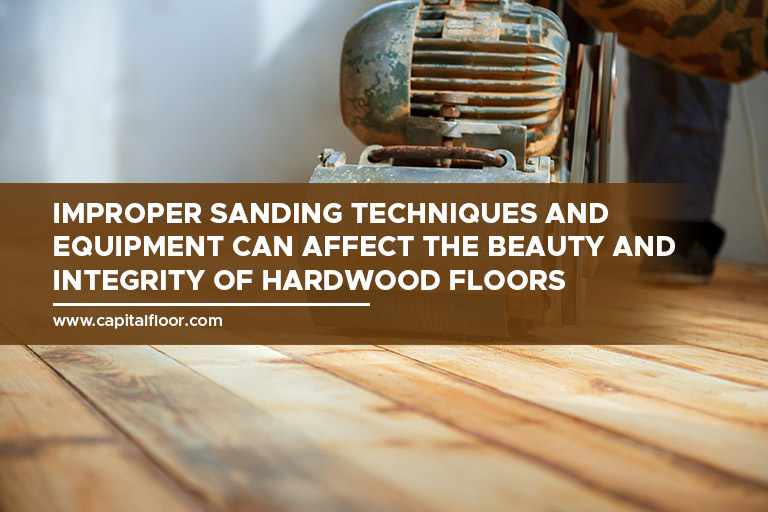Our showroom is open to the public. Please click HERE for more details.
Our showroom is open to the public. Please click HERE for more details.
Combining timeless elegance and durability, hardwood floors are truly a classic addition to any home. Modern technology has also introduced the likes of engineered hardwood flooring, which reduces the likelihood of certain problems inherent to wood, like warping and moisture damage.
However, despite an improvement in quality, they are still prone to certain types of damage. From installation to aftercare, hardwood flooring must undergo specific maintenance processes to keep them in good condition.
Avoid the following hardwood flooring faux pas so you can ensure that your hardwood floors last decades.
The structure of your home’s subfloor is integral to the hardwood installation process. It serves as the foundation of the entire flooring structure, providing a sturdy and dry base to build upon.
If your subfloors are improperly installed, it could lead to constant squeaking noises and shifting. If the subfloor is moist during the installation, it can lead to extensive damage and decay.
When prepping the subfloor, make sure to clean it properly by thoroughly removing dirt and debris. It should also be wiped and dried before the layering of engineered flooring to achieve a solid foundation.
Making sure that the surface is level is also crucial because it can help avoid floor unevenness, which could lead to additional costs for renovation. You should also invest well in good subfloor materials and refrain from cutting corners during the installation.
Every tree species has its unique capacity to hold or keep moisture away. One of the most common problems that hardwood flooring will experience is its likelihood to absorb moisture, which could lead to expansion, shrinkage, distortion, and damage.
To avoid this, your subfloors should be properly acclimatized during the installation process. This is done through a moisture testing process that will be conducted for a week or so to fully determine if it’s able to withstand the current temperatures of your home.
After the acclimation time, you can then proceed to layer the additional floorboards. However, not every tree species will have the same acclimatization time.
Rushing through the installation process can lead to plenty of imperfections and problems in the future. Quality installation takes time and a significant amount of effort to ensure that each measurement is accurate, that each board is laid out correctly, and that the finishing is done well.
While you can always go the DIY route, when installing your hardwood floors, if you’re new to the process, it’s better to

Hardwood is produced in “runs”. Hardwood boards that come from one run usually have the same shade. If you’re installing hardwood floors on a large area, you will likely be using boards produced from two or more runs, which will mean that your collection of boards will vary significantly in terms of shading.
These boards could contrast sharply with each other if you don’t plan the installation properly. When installing, you should take boards, one from each box, simultaneously. This will allow you to mix boards from various runs so the different shade variations blend together and make for a more seamless flooring design.
Natural wood, due to its porous quality, will expand and contract in response to the environmental humidity of your home. To prevent any damage, expansion joints are installed on the floor edges to help the floor boards cope with tensile forces.
If these joints are improperly installed, then it could lead to buckling and further damage to your floors. Just remember to always double-check these joints during the installation process and remember to place them in the correct spots.
Floorboards tend to peak up or move when pressure is applied. Fortunately, you can always staple and nail them to avoid lippage or excessive movement between boards.
However, when the nails are not properly spaced or stapled, problems occur. The boards will not be properly attached to the foundation and they could move and break when intense pressure is applied. A good rule of thumb is to have at least 10 inches of distance between each nail so the boards are securely held in place.

Floor sanding is a vital step in the hardwood installation process. Floor sanding helps smoothen the surface and level it before the final coat is applied to ensure that no splinters or sharp points will protrude.
During sanding, installers need to use the appropriate sander and grit size depending on the species of wood. Incorrect sanding techniques and sanding too aggressively can also lead to damage.
The installation job concludes by adding a coat of lacquer or resin to seal the boards for protection and added shine. Before proceeding with this final process, always remember to clean the wood surface first. Remove any dirt, debris, and splinter that may stand out.
Properly sanding the wood and fully wiping it can help create a smooth finish. Forgetting this critical task can negatively impact your entire installation work.
Hardwood flooring installation is an arduous and delicate process. It must be done properly to ensure that it can withstand the elements, accidents, and daily bustle of your home.
For your hardwood flooring products and installation in Toronto, reach out to Capital Hardwood Flooring. Call us now at (416) 536-2200 or visit our showroom to inquire about our services or view our hardwood flooring products.